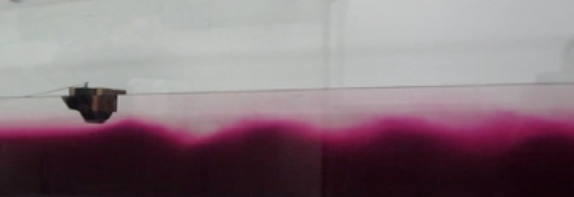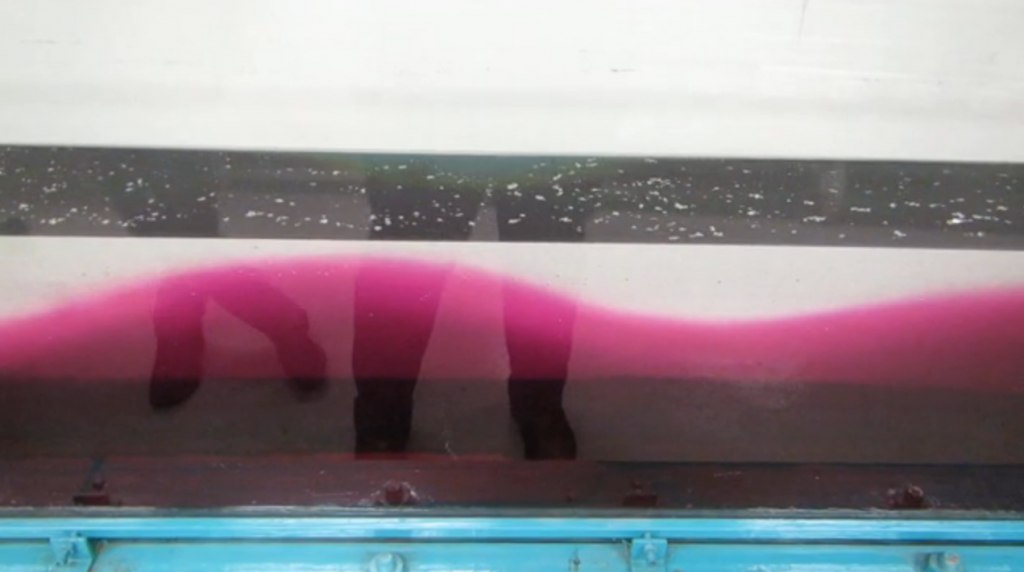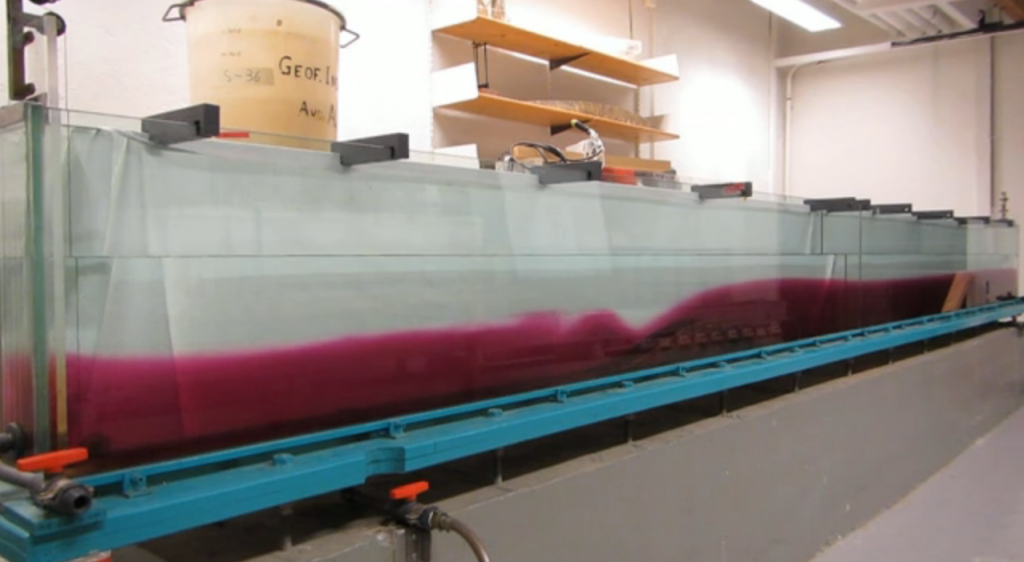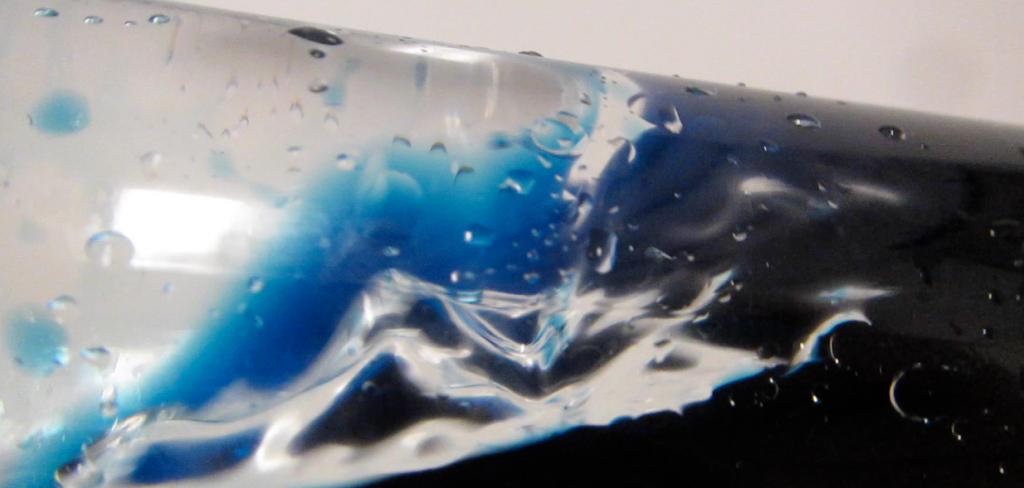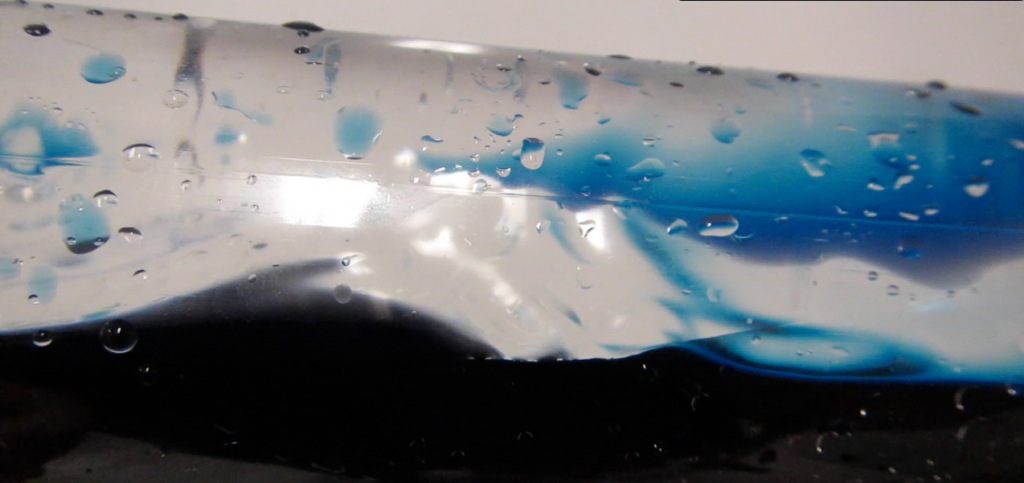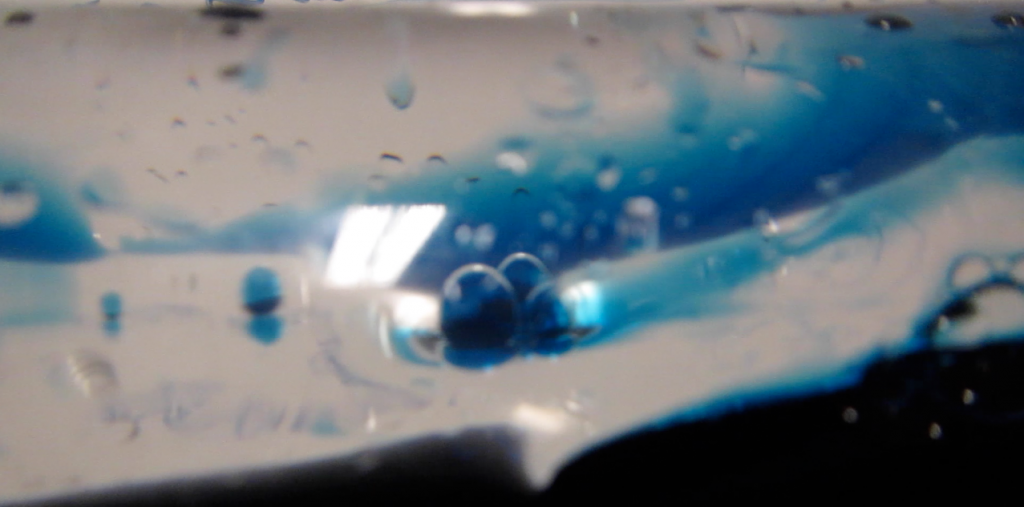And here is another experiment that can be done with the same stratification as the lee waves: Towing a ship to explore the phenomenon of “dead water”!
Dead water is well known for anyone sailing on strong stratifications, i.e. in regions where there is a shallow fresh or brackish layer on top of a much saltier layer, e.g. the Baltic Sea of some fjords. It has been described as early as 1893 by Fridtjof Nansen, who wrote, sailing in the Arctic: “When caught in dead water Fram appeared to be held back, as if by some mysterious force, and she did not always answer the helm. In calm weather, with a light cargo, Fram was capable of 6 to 7 knots. When in dead water she was unable to make 1.5 knots. We made loops in our course, turned sometimes right around, tried all sorts of antics to get clear of it, but to very little purpose.” (cited in Walker, J.M.; “Farthest North, Dead Water and the Ekman Spiral,” Weather, 46:158, 1991)
Finding the explanation for this phenomenon took a little while, but in 1904, Vilhelm Bjerknes explained that “in the case of a layer of fresh water resting on the top of salt water, a ship will not only produce the ordinary visible waves at the boundary between the water and the air, but will also generate invisible waves in the salt-water fresh-water boundary below” — a lot of the ship’s work is now going towards generating the internal waves at the interface rather than for propulsion.
It’s hard to imagine how a ship will generate waves somewhere in the water below, so we are demonstrating this in the tank:
Isn’t it fascinating to think about how far oceanography has come in only a little over a hundred years? And despite all the extremely powerful instrumentation and modelling that we have available now, how cool are even such simple demonstrations in a tank? These are the moments where I know exactly why I went to study oceanography in the first place, and why it’s still the most fascinating subject I can think of…
